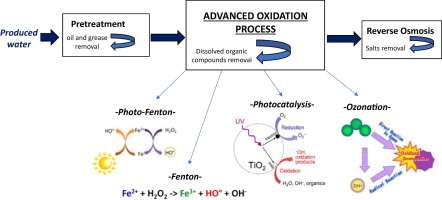Access to safe and clean drinking water is a fundamental human right, yet remains a significant challenge globally. Traditional water treatment methods, while effective to a degree, often struggle to remove emerging contaminants like pharmaceuticals, pesticides, and industrial chemicals. This is where the advanced oxidation process drinking water treatment steps in as a game-changer. These processes represent a suite of cutting-edge technologies designed to degrade and mineralize these persistent pollutants, offering a more comprehensive and sustainable approach to water purification. The advanced oxidation process drinking water treatment is poised to transform how we think about and manage our water resources for generations to come.
Understanding Advanced Oxidation Processes (AOPs)
Advanced Oxidation Processes (AOPs) are a set of chemical treatment procedures used to remove organic materials from water by oxidation through reactions with hydroxyl radicals (•OH). These highly reactive radicals can non-selectively oxidize a wide range of organic pollutants, converting them into harmless substances like water and carbon dioxide. Unlike traditional disinfection methods that often leave behind disinfection byproducts, AOPs aim for complete mineralization.
Common AOP Technologies
- Ozonation (O3): Ozone is a powerful oxidant that can directly react with pollutants or decompose to form hydroxyl radicals.
- Hydrogen Peroxide (H2O2): Hydrogen peroxide can be used alone or in combination with UV light or other catalysts to generate hydroxyl radicals.
- UV/H2O2: The combination of ultraviolet (UV) radiation and hydrogen peroxide is a widely used AOP. UV light breaks down hydrogen peroxide into hydroxyl radicals.
- Fenton’s Reagent (Fe2+/H2O2): Fenton’s reagent utilizes ferrous ions (Fe2+) to catalyze the decomposition of hydrogen peroxide into hydroxyl radicals.
- TiO2 Photocatalysis: Titanium dioxide (TiO2) is a semiconductor photocatalyst that generates hydroxyl radicals when exposed to UV light.
Advantages of AOPs in Drinking Water Treatment
AOPs offer several key advantages over conventional water treatment methods:
- Effective Removal of Emerging Contaminants: AOPs can effectively degrade a wide range of organic pollutants, including pharmaceuticals, pesticides, and endocrine disruptors, which are often resistant to traditional treatment processes.
- Minimal Disinfection Byproduct Formation: Unlike chlorination, AOPs generally produce fewer harmful disinfection byproducts.
- Improved Taste and Odor: AOPs can remove taste and odor-causing compounds, enhancing the aesthetic quality of drinking water.
- Potential for On-Site Treatment: Some AOP technologies can be implemented in decentralized or point-of-use systems, making them suitable for treating water at the source.
Challenges and Future Directions
While AOPs hold immense promise for improving drinking water quality, some challenges remain:
- Cost: AOPs can be more expensive than conventional treatment methods, particularly in terms of energy consumption and chemical costs.
- Complexity: AOP systems can be more complex to operate and maintain than traditional treatment plants.
- Byproduct Formation: While AOPs generally produce fewer disinfection byproducts, some processes can generate undesirable byproducts under certain conditions.
Ongoing research is focused on addressing these challenges through:
- Developing more energy-efficient and cost-effective AOP technologies.
- Optimizing AOP processes to minimize byproduct formation.
- Exploring the use of novel catalysts and oxidants.
The future of drinking water treatment hinges on innovative solutions that can address the ever-evolving challenges of water contamination. Ultimately, advanced oxidation process drinking water treatment methods offer a pathway towards achieving safer, cleaner, and more sustainable drinking water for all.







